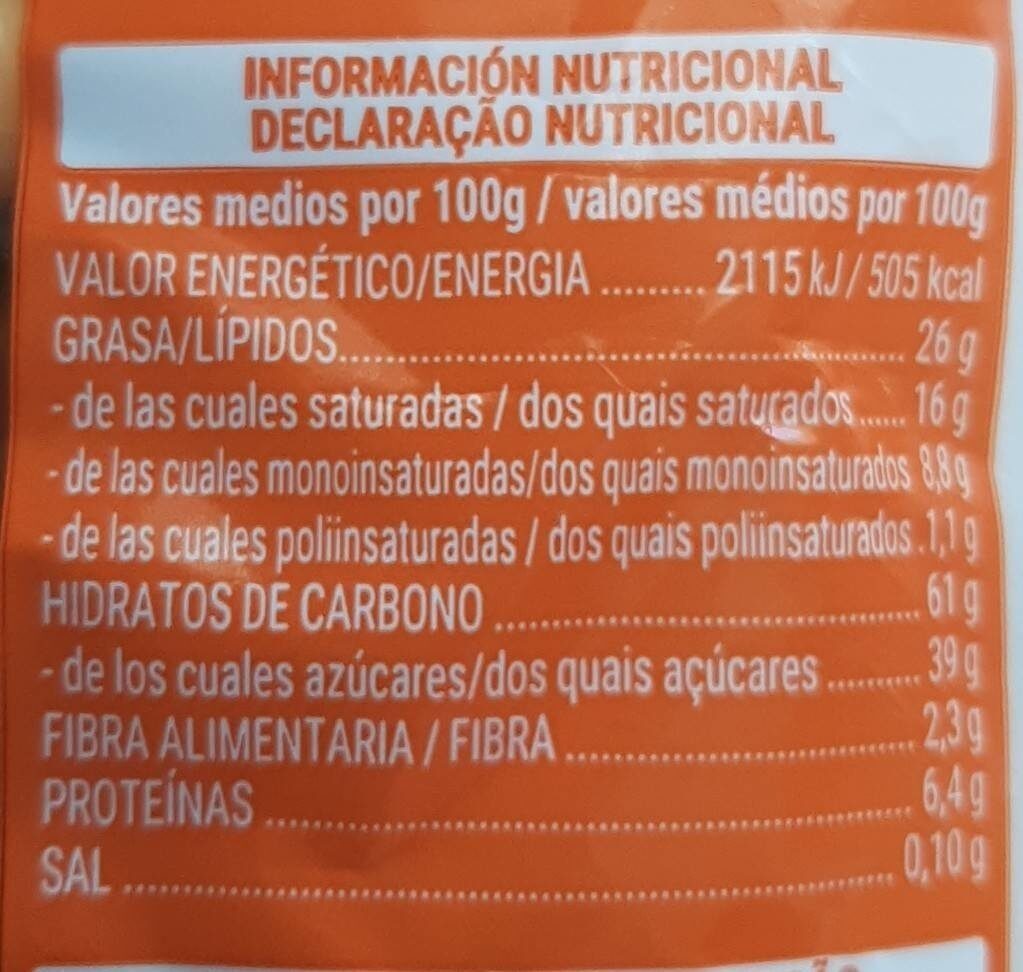Bola cereal chocolate - Hacendado - 200 g
This product page is not complete. You can help to complete it by editing it and adding more data from the photos we have, or by taking more photos using the app for Android or iPhone/iPad. Thank you!
×
Barra-kodea: 8480000340467 (EAN / EAN-13)
Izen arrunta: Maíz extrusionado con chocolate negro, leche y blanco
Kopurua: 200 g
Ontziratzea: en:Bag, es:Green dot
Markak: Hacendado
Kategoriak: en:Snacks, en:Sweet snacks, en:Cocoa and its products, en:Confectioneries, en:Chocolate candies, en:Bonbons
Etiketak, ziurtagiriak, sariak:
en:No gluten, en:Not advised for specific people, en:Green Dot, en:Not recommended for children under 3 years
Origin of ingredients: Espainia
Manufacturing or processing places: Beniparrell
Dendak: Mercadona
Saltzen diren herrialdeak: Espainia
Matching with your preferences
Ingurumena
Ontziratzea
Transportation
Report a problem
Datuen iturria
Product added on by openfoodfacts-contributors
Last edit of product page on by kiliweb.
Produktuaren orria -gatik editatua acuario, alia, autorotate-bot, ecoscore-impact-estimator, ladyeevava, moon-rabbit, musarana, packbot, roboto-app, saisa, yuka.VDdvSEZvRTlpdUVIZ1BNeW95N3hwYzVIbTRhbVprQ0dkOWhPSVE9PQ, yuka.WUlrd0Q0UUxwZGNXb2ZJZy9STFJ3ZUowbDZiM2JHaVFNN1FNSVE9PQ, yuka.WmFNcExvOGk5dkFYdk1CdTNSZnd4ZXhIenErbGNtbTBFZlJJSUE9PQ, yuka.Yi84Q0xaZ205L2NEbU0wYzl5ankzTlpyemNHa1VHaXBBYlZMSUE9PQ, yuka.ZTVzT0NKVWFxOVVvcWNZUjFURHZvdEo3NXI2NERVR0tBdTVBSUE9PQ, yuka.ZWJ3UkZmMGQrZDRrbDhJZiswaUlvdElzNGFDWFVuNlZNY3c5SVE9PQ, yuka.ZXFzQ05ZZGVwK0lRZzhJWi93L1UrK04veE1hREFqbnNFYlJLSUE9PQ, yuka.sY2b0xO6T85zoF3NwEKvlk5OVtmFgwDeDkHiqBeOyo_RLpjUWe0p3Yv-H6o, yuka.sY2b0xO6T85zoF3NwEKvlkJiA9v_nBnZbif5klXQ4c_QEYH3Qo1eyNSlM6s, yuka.sY2b0xO6T85zoF3NwEKvlnF9DPaGoB31GBD5wnel2vnRIq3lQIBV7LHRb6o.








